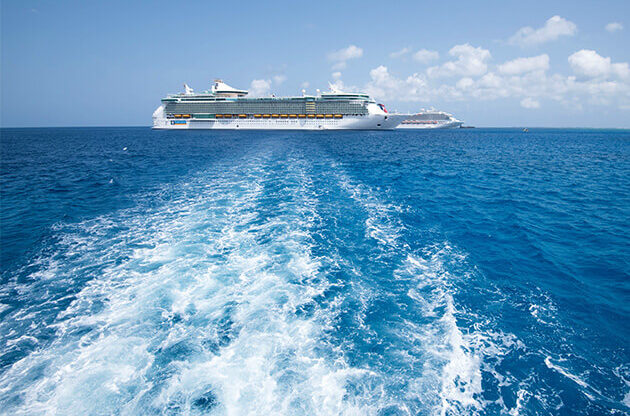Table Of Content

In some places around the world, government regulations require cruise ships to travel at a slow speed. On sea days, it is common for a ship to slow down to follow favorable weather so passengers can enjoy the sunshine. This is especially the case when the distance to the next port is short.
How Long Does It Take To Cross The Mediterranean Sea?
The hull design affects how efficiently the ship moves through the water and can impact its speed and fuel consumption. The world's second-fastest cruise ship is MS Voyager (last named Costa Voyager), now owned and operated by a Chinese company. While speed is essential, passenger comfort is also a priority for cruise lines. Ships are designed to minimize the effects of motion sickness by employing advanced stabilization techniques.
Royal Caribbean Blog is your ultimate source for Royal Caribbean coverage.
Cruises to Greenland: What to Know Before You Go - Cruise Critic
Cruises to Greenland: What to Know Before You Go.
Posted: Mon, 21 Aug 2023 07:00:00 GMT [source]
However, water conditions, bad weather, and several other factors can affect cruise ship speed on any particular day. So, the same ship might register two different top speeds if we were to give it trials on two separate days. Going faster can lead to a bumpy ride as faster speeds pull more of the hull out of the water. Since giving passengers a comfortable ride is vital, it’s unlikely that a captain would increase the speed unnecessarily. A cruise ship needs to get to the next port on time, not early or late.
How Fast Do Sailing Boats Go?
LNG engines are able to increase efficiency by 15% or more, especially with waste heat recovery (WHR) systems in place. LNG stands for liquified natural gas and was first used for tankers and carriers. A passenger onboard may have a medical emergency and need transportation to the nearest hospital.
Port of Galveston Location
Usually, the diesel fuel that they use for locomotion is a lower grade than what goes into roadworthy diesel vehicles. The lower efficiency means there’s more polluting exhaust, too. Aero derivative gas turbine engines and diesel-electric engines both rely on super-heated air to combust.
Hull Design
Now, she helps over 1 million people per month to plan their perfect cruise holidays. After the hurricane of 1900, the entire island was built up, with a protective barrier along the island facing the Gulf of Mexico. Today the main boulevard on the island runs along the Seawall, and hotels next to it offer unfettered views of the water.
Once off the ship, you’ll make your way through the terminal and pick up any luggage you set outside your cabin. You’ll then go through customs and immigration to legally enter back into the United States. As you approach the terminal, you’ll see lots of porters ready to assist you with your bags.

Weather & Sea Conditions
These technologies help ensure a steady speed and a more enjoyable experience for passengers. Cruise ships need to strike a balance between speed and fuel efficiency. The faster a ship travels, the more fuel it consumes, which can significantly increase operational costs. Cruise lines aim to find the optimal speed that allows them to cover the desired distance in a reasonable amount of time without excessively consuming fuel.
As a result, cruise ships don’t need to expend as much energy moving through water. At night, cruise ships also reduce their speed to avoid hitting other vessels. Marella cruise ships usually sail at an average speed of 12 knots. However, once you get into international waters, then you might want to consider making 15 knots since you could potentially cover thousands of nautical miles each week.
SchlitterbahnThe famous Texas waterpark with several locations around the state has a park in Galveston. Here you can relax on a lazy river, get extreme on tons of different slides, and even surf a standing wave. There are also a number of options for all ages so whether you have a toddler or a teenager, they will find a lot to do at Schlitterbahn Galveston. It’s a fun thing to do as the ride takes only about 15 minutes and gives great views of the bay. There are also hotels on the mainland, just minutes from the island.
Together, these devices create enough force to propel a ship forward at incredible rates of speed. As mentioned earlier, larger boats require greater horsepower to move them through the water. As a result, they consume more fuel compared to smaller craft. A typical yacht consumes less than 2 gallons per hour whereas a super yacht can burn upwards of 5 gallons per hour. It should be noted though that even small yachts can still consume several hundred pounds of gas every single month. She has worked in the cruise industry since 2015 and has taken over 30 cruises.
Cruise ships aren’t meant to fly through the sea, but instead, function to enhance the comfort of its passengers while also improving fuel efficiency. The average speed of a cruise ship is 18 to 22 knots (20 to 25 miles per hour). The maximum top speed of a cruise ship is around three knots faster than its real-life average cruising speed. The fastest cruise ship, Cunard’s Queen Mary 2, can reach top speeds of up to 30 knots. It’s important to remember that these speeds are exceptional and not the norm for most cruise ships.
There are also a number of factors that impact travel speed, but we’ll get to that in a moment. A knot is the nautical measure of speed used by cruise ships and other maritime vessels. Luckily, modern cruise ships can sail fast to avoid a storm when needed, while large, choppy swells might require the ship to sail at a slower pace for safety. Cruise ships that are massive in size take a lot of fuel to maintain an average cruising speed.
The speed of a cruise ship is determined by multiple factors, including engine power, hull design, and water and weather conditions. Cruise ships are engineered to optimize hydrodynamic efficiency and reduce drag, allowing for faster speeds and better fuel efficiency. However, the speed at which a cruise ship travels is not always at its maximum. The cruise line takes into consideration factors such as fuel economy, safety, and passenger comfort when determining the speed of the ship. Cruise ship speeds vary based on factors such as size, design, and weather conditions, with average speeds, typically ranging between 20 and 25 knots. While speed is crucial for itinerary planning and passenger comfort, cruise lines must balance this with fuel efficiency and sustainability concerns.
Sophia’s travel expertise comes from her time as a reporter for The Points Guy, featured in Forbes, Business Insider, and The Balance. When not traveling, she enjoys relaxing in Priority Pass lounges with tea and battling slow Wi-Fi. Join her as she shares cruise insights and explores the world, one voyage at a time. Yes, cruise ships can outrun storms or navigate around storm cells as they move about twice as fast as the storms themselves.

No comments:
Post a Comment